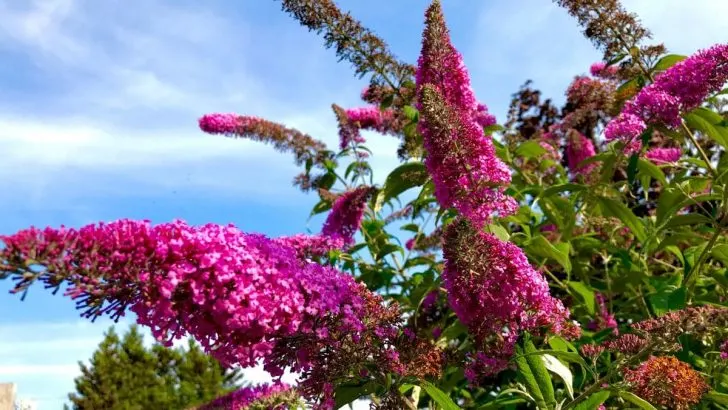South Florida butterfly plants will help you achieve that amazing butterfly garden looks you always wanted.
What’s more beautiful than seeing butterflies on the yellow flowers in our yard? With the presence of wildlife, it’s like nature’s saying that you’re doing a good job.
If you get to attract a monarch butterfly, one of the rarest butterflies in this region, then you’ve really made it. Believe it or not, attracting butterflies to your garden is more challenging than it sounds.
Butterfly host plants have to be healthy, nectar plants, and 100% butterfly species. If you manage that your purple flowers and pink flowers attract butterflies, we say a good job. Unfortunately, even butterfly gardens can’t survive without a care guide.
Below, we bring you the 11 best south Florida butterfly plants and their care guides in detail.
What Plants Attract Butterflies?
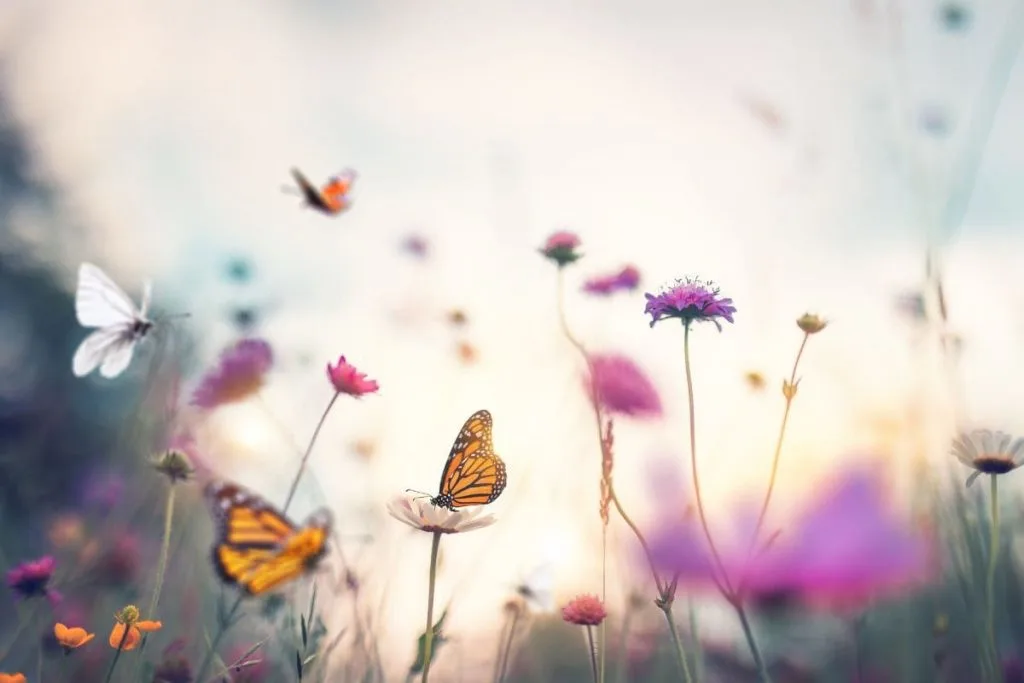
The host plant that attracts butterflies is usually orange flowers, yellow flowers, pink flowers, and big flower clusters that butterflies can land on. These plants typically have a big amount of nectar that butterflies just as other insects adore.
Both butterflies (queen butterflies and other butterflies visiting) will visit these plants once they blossom. By planting the plants that attract butterflies, you’re increasing a butterfly habitat in your region as well.
As we already said above, if you attract a zebra longwing butterfly or gulf fritillary butterflies then you’re truly doing a good job.
They are sort of picky butterflies. A few plants you plant as butterflies species might not get visited at first, but they’ll get there, no worries.
11 Perfect South Florida Butterfly Plants
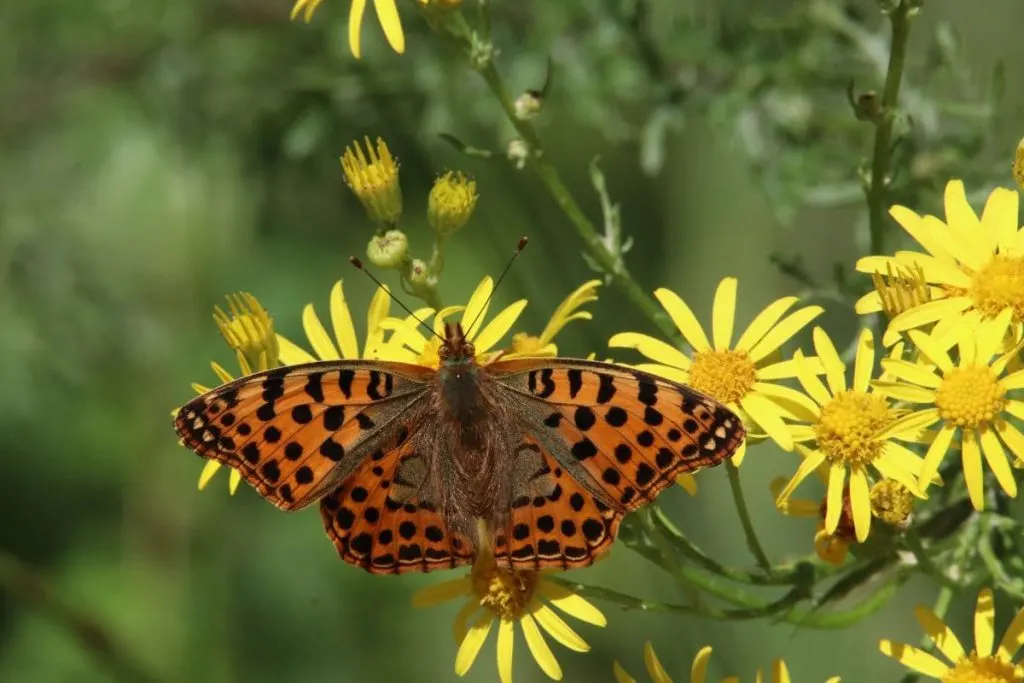
No matter what you prefer, star-shaped flowers, passion flowers, tubular flowers, or a simple evergreen shrub, we got it all for you. Most of the plants we bring for you today are native to Florida plants.
Beautiful butterflies will be a common thing in your garden after you plant them. Along with butterflies, these plants will be attracting hummingbirds and other insects too. Several species will attract butterflies only.
Let’s find out the care guides in detail for the 11 butterfly plants below.
1. Butterfly Weed
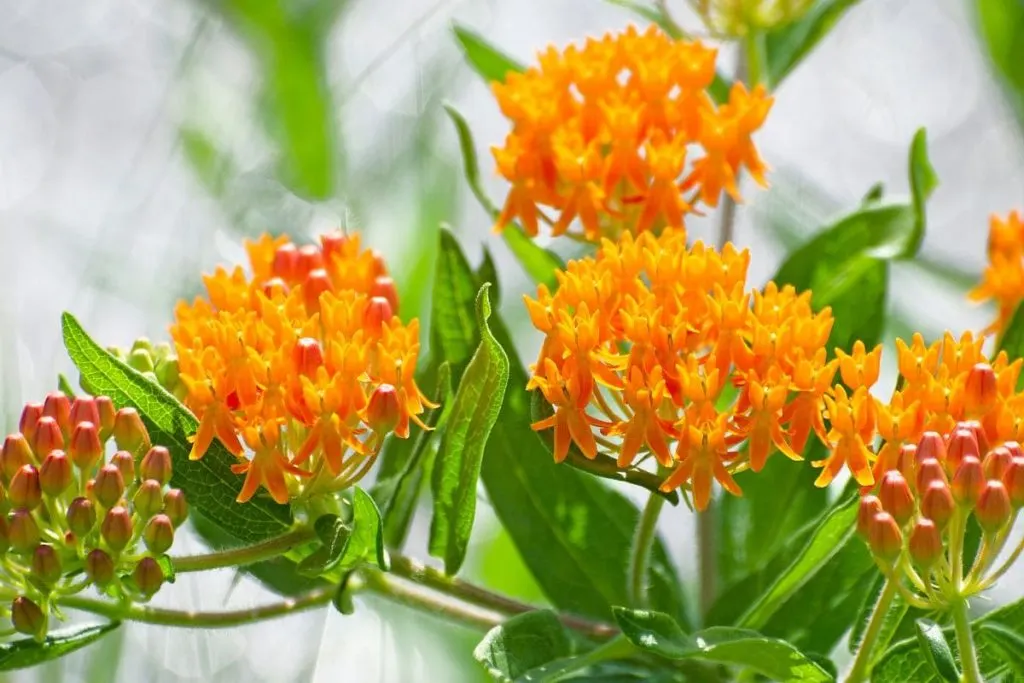
Below we bring you the main botanical characteristics and care guide in detail about a lovely butterfly weed. Let’s see if this plant is worthy of your effort and spot in your garden.
- Botanic name: Asclepias tuberosa
- Family: Apocynaceae
- Subfamily: Asclepiadoideae
- Leaf shape: Linear to oblong to lanceolate
- Flower color: orange, yellow, and red flowers
- Use: ground cover plants
- Toxicity: mildly toxic to humans and to animals
Light needs
Butterfly weeds will grow the best in partial shade conditions combined with full sun. Allow it the direct sunlight in the morning for at least 2-3 hours.
In a full shade position, this plant will grow slower than usual and its leaf colors won’t be as bright as they should be.
Watering needs and Humidity
This plant likes a big amount of humidity which means the average humidity of Florida suits it more than well.
However, the plant is slightly drought-tolerant and it doesn’t like much water. Water it every 7-8 days and that should be enough.
However, even without watering every 7 days, plants can thrive without water for up to almost 2 weeks.
Fertilizer and Soil Type
This plant doesn’t have to be fertilized at all. The soil type that suits it the best in sandy soil. However, you can always add a bit of peat moss or perlite soil to it.
Make sure their percentage is equal because this plant doesn’t like acidic soils.
Temperature and Propagation
The plant is easily propagated from seeds in the early springtime. Seeds are collected in the late summertime or in the early fall. The temperature that suits it the best is between 65 and 75 F. It doesn’t stand cold weather well.
2. Milkweed Plants
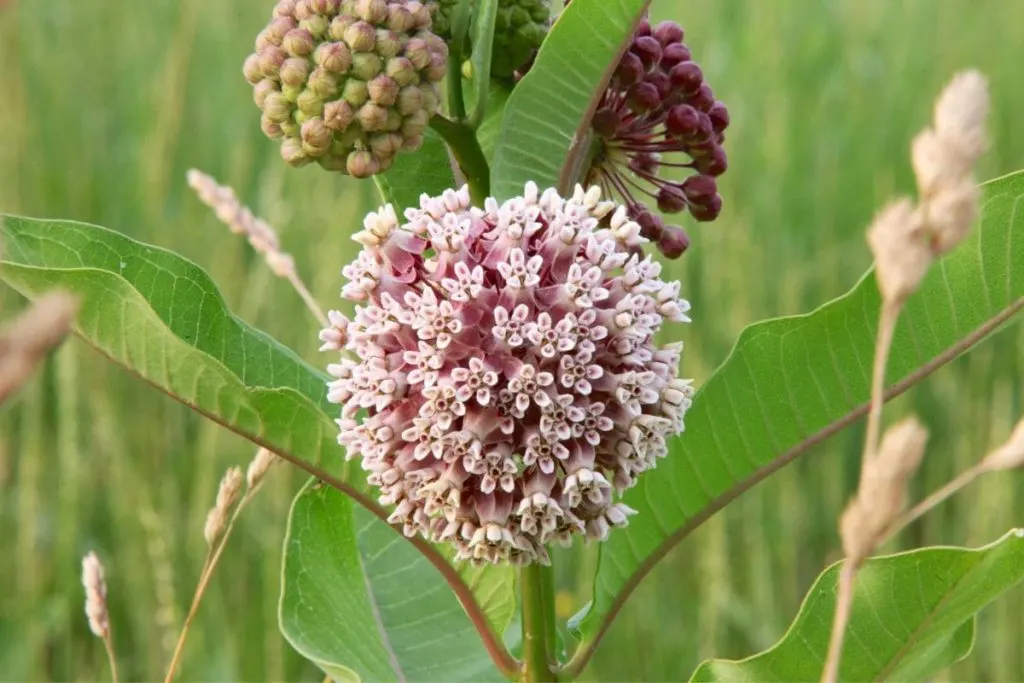
Before choosing milkweed plants for your home, find out their main botanical features and their care guide in detail. Let’s see if you can choose this plant for your garden.
- Botanic name: Asclepias
- Family: Apocynaceae
- Subfamily: Asclepiadaceae
- Leaf shape: oval shaped
- Flower color: white, yellow, red, purple, pink, and orange flowers
- Use: to treat dysentery
- Toxicity: toxic for humans and animals
Light needs
Milkweed plants need direct sunlight to grow well. In partial shade conditions, they will grow, but not as well as they grow with the sun.
They need at least 4 hours of full sun to bloom and grow without any problems. Don’t plant them in the shade of another plant as well.
Watering needs and Humidity
They don’t like humid areas much. However, the average humidity of Florida is around 65%. That is a bit too much for this plant, but with reduced watering/less watering that is alright.
Water this plant every 10 days. Reduce the watering in the wintertime if you grow in regions with 4 seasons.
Fertilizer and Soil Type
The plant doesn’t have to be fertilized. If you however decide to do so, you can use a regular houseplant fertilizer.
Sandy soils suit this plant the best. The plant is drought tolerant so well-drained soils are a big yes for it.
Temperature and Propagation
The plant loves warmer temperatures. It doesn’t thrive well in colder regions. It originates from Mexico and Australia and because fo this it will not grow well in colder areas. It is easily propagated from the seeds in March.
3. Lavender Flowers
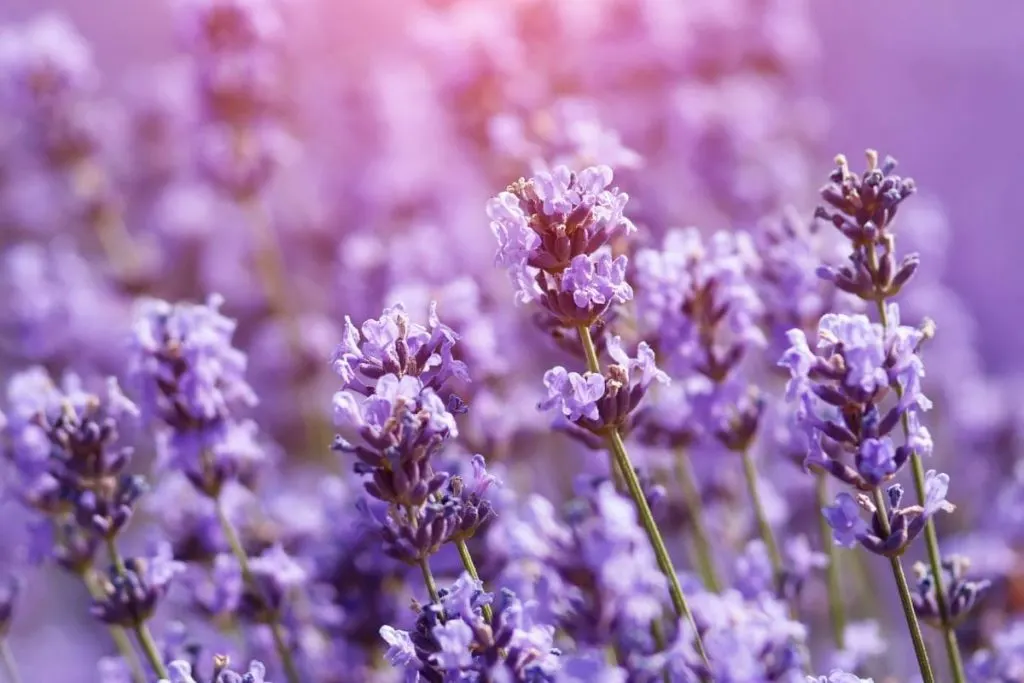
If you’re a fan of violet flowers, you’ll enjoy lavender flowers as well. In the sections below you’ll find general information about its botanical appearance and more about its care guide.
- Botanic name: Lavandula
- Family: Lamiaceae
- Subfamily: Nepetoideae
- Leaf shape: simple, narrow
- Flower color: violet
- Use: scent is used for candles, cremes, and other domestic products
- Toxicity: non-toxic
Light needs
Lavender loves the full sun in the morning and partial shade in the afternoon. Full shade just as the full sunlight for the entire day is a big no-no for lavender plants.
Some people plant them indoors, but in that scenario, you will need a perfect location for them to thrive indoors. The south window suits them the best. Indoors they are planted in containers.
Watering needs and Humidity
Lavender flowers aren’t huge water fans but they aren’t drought-tolerant either. Water them every 9-10 days and in their active growing season, at least every 7 days. They like average humidity such as 40-50%.
Fertilizer and Soil Type
Lavender isn’t a heavy feeder plant but if you’re planting to grow a bigger amount of this plant, you should fertilize them then.
A low-nitrogen fertilizer is the best solution for them in such scenarios. They grow best in sandy soils combined with medium-acidic soils.
Temperature and Propagation
Lavender plants love warmer regions. They won’t grow in colder regions outside. Temperature below 55 F is also lower for them. The best ratio for this plat is between 65 and 75 F. They are propagated from the seeds in early April.
4. Firebush
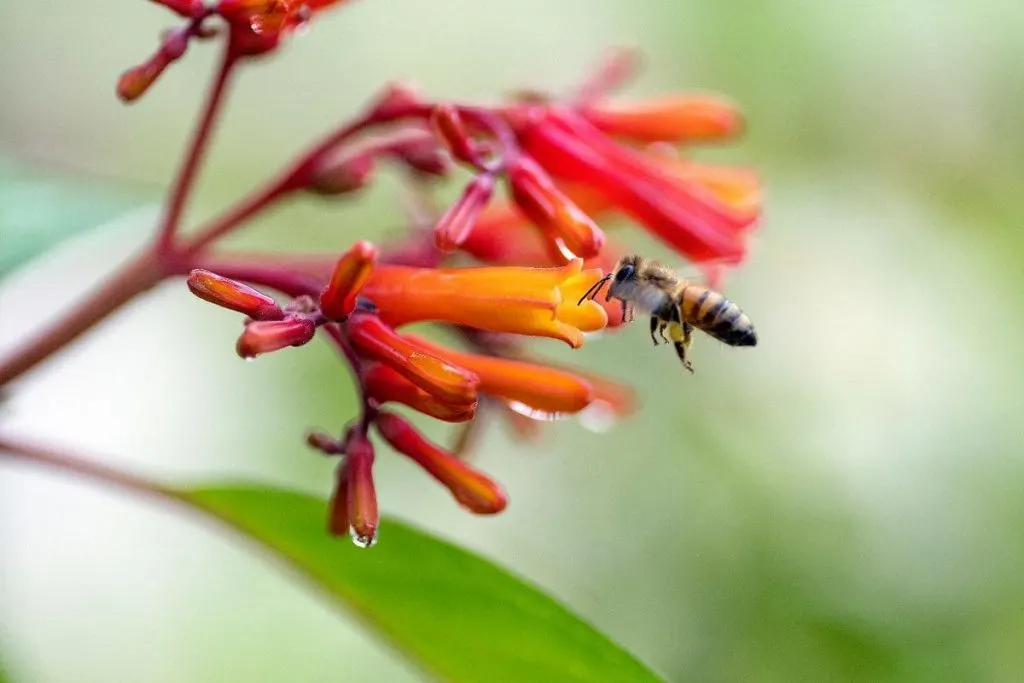
How about a super unusual plant that will blow you away? That is a fire bush plant for sure. In the text below we prepared for you all about its care guide and botanical features.
- Botanic name: Hamelia patens
- Family: Rubiaceae
- Subfamily: Rubiaceae
- Leaf shape: oval
- Flower color: red, and orange flowers
- Use: decor plant
- Toxicity: toxic and dangerously purgative
Light needs
Grow your firebush plant in a location with full sun until noon. From noon, your plant should have partial shade because it will not grow well in full sun. Over time, spots will appear on the leaves, which of course is not good for the plant.
Watering needs and Humidity
You don’t have to water it very often. Every 10 days is more than enough for this plant. It is well adapted to drought, so it will last up to 2 weeks without water.
After that, continue watering normally. It does not like high humidity. Medium average humidity suits her best.
Fertilizer and Soil Type
Fertilize the firebush plant with a fertilizer that has a small amount of nitrogen in it. In addition to this fertilizer, you can also use 10-10-15 fertilizer. It grows best in a combination of black soil and sand. It likes well-drained soils.
Temperature and Propagation
It does not like colder regions and will not succeed in such regions. Does not tolerate temperatures below 50 F well. It’s propagated by seed in spring or early summer.
5. Fiddlewood
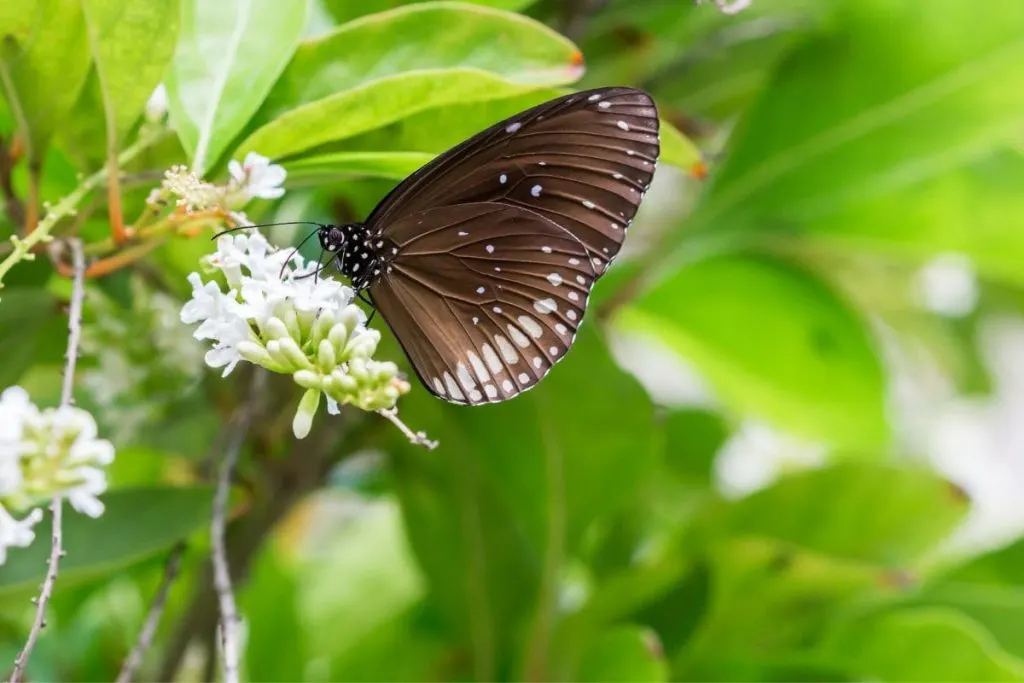
If you’re thinking about planting an unusual plant in your yard, this is your choice. Find out more about fiddlewood’s botanical features and simple care guide before planting them.
- Botanic name: Citharexylum quadrangular
- Family: Verbenaceae
- Subfamily: Citharexylum spinosum
- Leaf shape: oval crown shape
- Flower color: white
- Use: decor plant
- Toxicity: parts of the plant are poisonous
Light needs
It would be best if this plant grows in a sunny position. The first time you plant it, plant it somewhere that has a few hours of sun a day and shade in the afternoon.
Full shade in the afternoon is tolerant for this plant, along with morning sun of course. After the first transplant, it can grow in a bright indirect light position.
Watering needs and Humidity
This plant does not tolerate much drought. For optimal and normal growth, you should water it in the morning every 6-7 days.
Do not overdo it with the amounts of water, so that problems such as yellow leaves, root rot, etc. do not occur. Medium air humidity suits her best.
Fertilizer and Soil Type
It is not necessary to fertilize this plant, although most gardeners do. If you still think that fertilizer will improve growth, use fertilizers with nitrogen and phosphorus. This plant appreciates these nutrients. It grows best in sandy soil.
Temperature and Propagation
Temperature is relatively unimportant for this plant because, unlike its predecessors, it can be grown in colder regions.
Of course, not the one with sub-zero temperatures, but 45 and 50 F is acceptable for this plant. It is propagated by seeds, like its predecessor.
6. Panama Rose
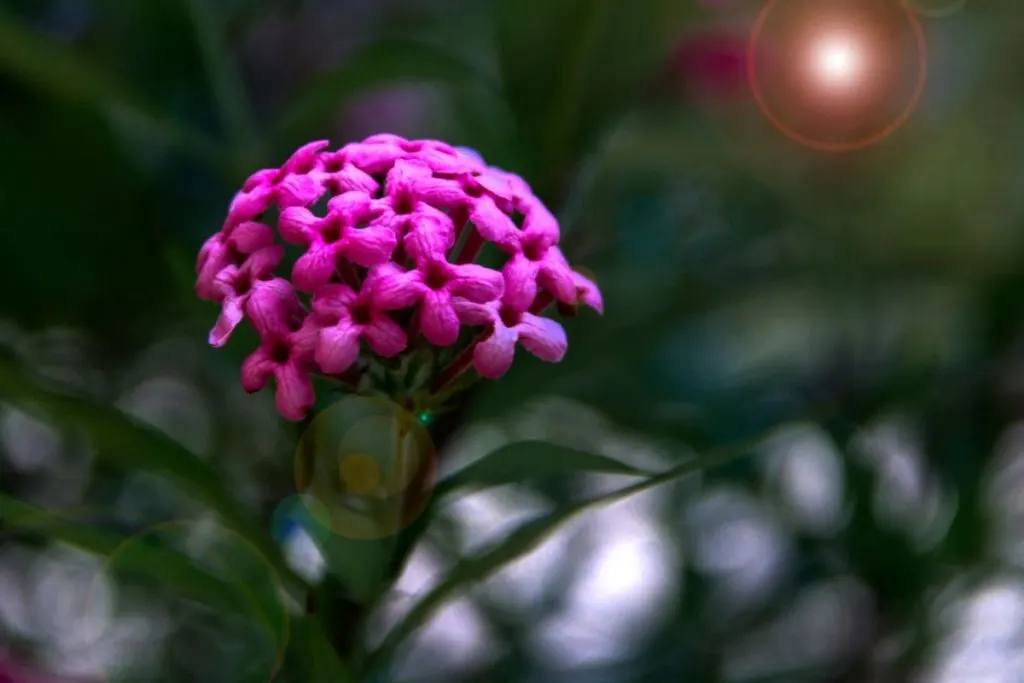
One thing is sure-we love all roses. Panama rose is another rose type you’ll fan in love with. If you enjoy dwarf variety roses, find out more about its features and care guide below.
- Botanic name: Rondeletia leucophylla
- Family: Rubiaceae
- Subfamily: /
- Leaf shape: oval shape
- Flower color: pink flower
- Use: landscape plant
- Toxicity: not safe for pets
Light needs
Panama rose plant loves the sun. It will need between 5 and 6 hours of sun for optimal growth. If the plant does not have these conditions, you will definitely notice its slower growth and appearance. The shade does not suit this plant at all.
Watering needs and Humidity
The watering schedule is very simple. In the evening when the sun sets or in the morning before the sun rises every 7-8 days.
Any type of water will suit this plant because it is salt tolerant. Average air humidity suits her best.
Fertilizer and Soil Type
Panam rose likes various types of fertilizers. Some of them are general-purpose garden fertilizers, low phosphorus fertilizers, 10-15-10 fertilizers, etc.
Fertilize them in early spring and mid-summer. It grows best in a combination of sand and perlite soil.
Temperature and Propagation
The plant does not tolerate low temperatures well. The lowest temperatures it can grow in are 55 F. Temperatures below that are questionable. It is propagated by seeds in late spring or early summer.
7. Beach Sunflower
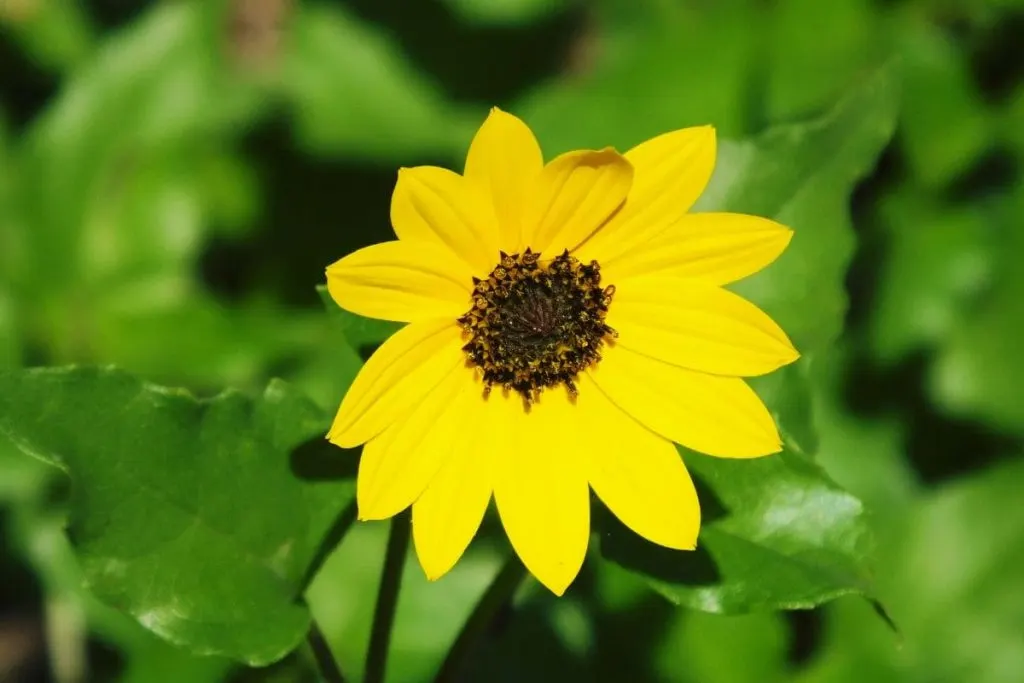
An amazing nectar source flower that thrives well in Florida is the beach sunflower. It usually grows around 3 feet tall. Find out more about its care guide and botanical appearance below.
- Botanic name: Helianthus debilis
- Family: Asteraceae
- Subfamily: /
- Leaf shape: lance shape
- Flower color: small yellow flower clusters
- Use: decor plant
- Toxicity: slightly toxic
Light needs
Already in the name of this plant, you can hint that it is a plant that loves the sun. These plants most often grow and are planted on beaches.
It likes direct sun and can tolerate direct sun even all day. With a little partial shade in your garden, it will grow excellently.
Watering needs and Humidity
It can withstand 10-12 and even 14 days without water, but we recommend watering every 7-8 days. Of course, with less water. It grows best when the humidity is between 60 and 70%.
Fertilizer and Soil Type
The plant does not need to be fertilized. It is important that you provide it with sandy soil because it grows best in it. You can also add some peat moss soil. Keep the ratio at 70:30 for optimal growth.
Temperature and Propagation
It does not like cold temperatures and will not grow at all in such regions. If it grows, it will only be during spring and summer, but in autumn you will notice changes in appearance. It is propagated by seeds that are collected in the fall.
8. Butterfly Bush
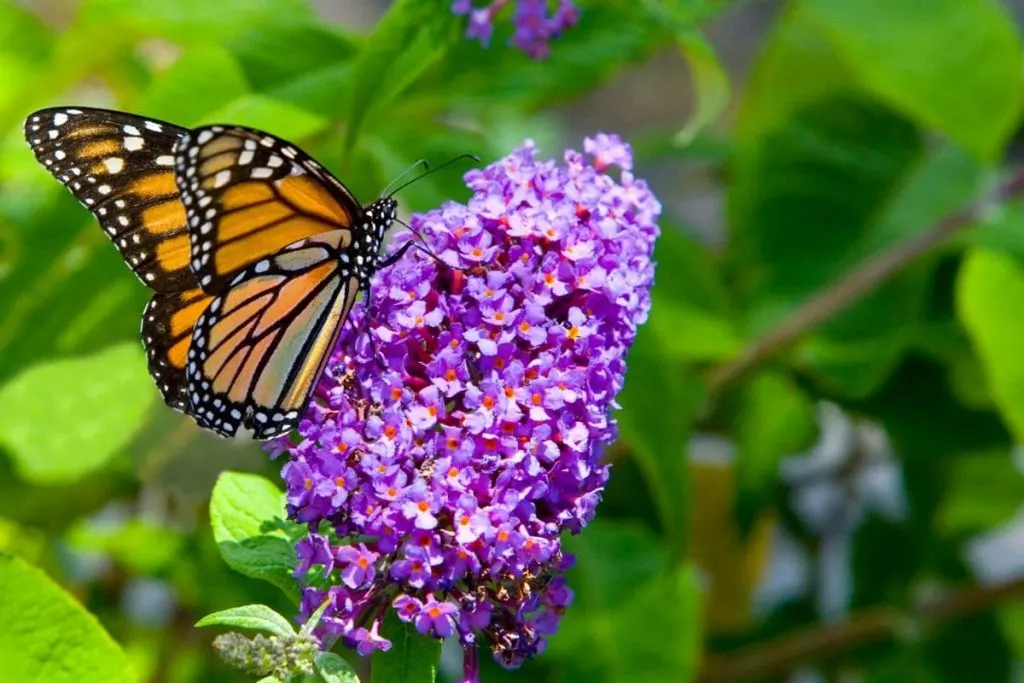
The name of this plant speaks for itself. Butterflies absolutely adore this plant. It looks like a small tree and it can be planted with other plants. Learn more about their care guide below.
- Botanic name: Buddleja davidii
- Family: Scrophulariaceae
- Subfamily: /
- Leaf shape: tight arrow shape
- Flower color: purple flowers
- Use: decor landscape plants
- Toxicity: toxic to dogs and cats
Light needs
Butterfly bush Florida plant loves the sun, but only when it is 2-3 hours of sun. He can and likes to spend the rest of the day in semi-shade.
It does not like full shade, nor the sun all day. The sun quickly dries the leaves of this plant. Therefore, you must pay attention to the location when planting.
Watering needs and Humidity
Water it every 7 days with rainwater or tap water. The plant tolerates the soil well, so the choice of water is not so important. It does not like humidity that exceeds 70%, so Florida is the ideal choice for this plant.
Fertilizer and Soil Type
It grows best in sandy soil. You do not need to fertilize this plant. The best temperature ratio for this plant is between 65 and 75 F.
Temperature and Propagation
It can grow where the temperature is 80 F, but not in regions with temperatures below 50 F. Collect seeds as early as late summer and use them to propagate in the spring.
9. Ruby Red
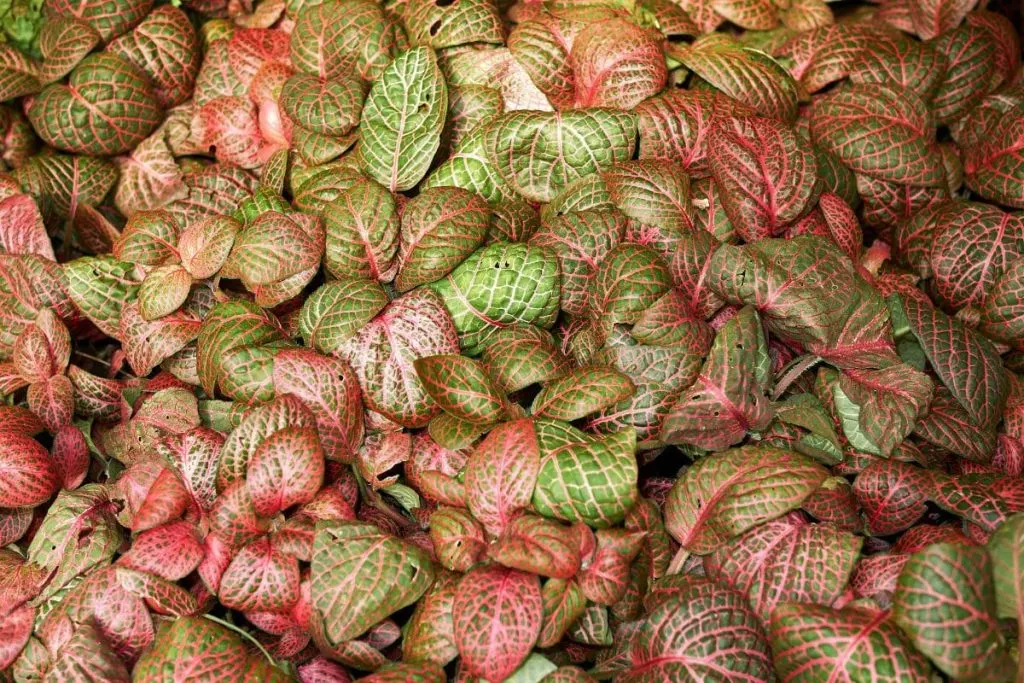
Ruby red will kill the monotony of any “boring” garden look with its dazzling appearance. Below you’ll find its unique botanical features and a very simple care guide.
- Botanic name: Fittonia albivenis
- Family: Acanthaceae
- Subfamily: Eremophila
- Leaf shape: oval shape
- Flower color: red flowers
- Use: decor plants
- Toxicity: non-toxic
Light needs
This plant likes to grow in locations with plenty of light. Direct sun is not a big must for this plant, but 2 hours of sun will be very useful. It does not like complete shade and will not grow in such conditions.
Watering needs and Humidity
Water the ruby red plant every 8-10 days. If watering is frequent, problems with the leaves or roots of this plant will appear very quickly. Watch the amount of water you give the plant. Humidity can be between 50 and 70%.
Fertilizer and Soil Type
It is not necessary to fertilize the plant, but you can use regular houseplant fertilizer. The best choice of soil is a combination of peat moss and sand. The ratio should be at 60:40.
Temperature and Propagation
The temperatures it does not like are all temperatures lower than 55 F. It grows best when the temperature is between 60 and 70 F. It is propagated by seeds or root suckers.
10. Necklacepod Tree
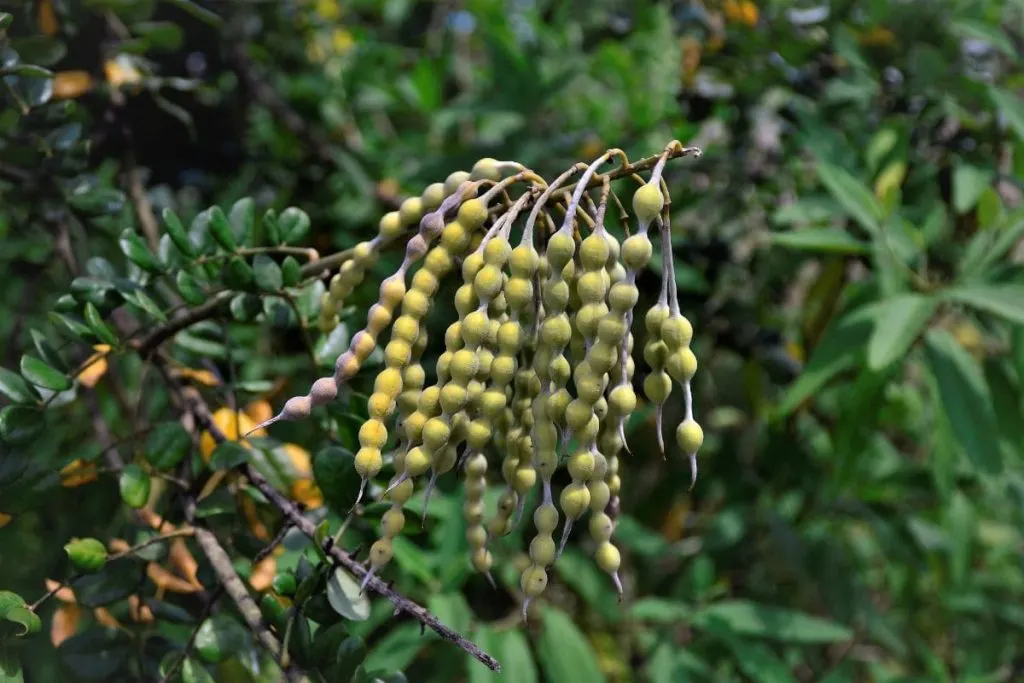
Just like flowering trees yellow and jatropha trees, the necklace pop tree is another tree that attracts butterflies. Learn more about their appearance and care guide in the text below.
- Botanic name: Sophora tomentosa
- Family: Fabaceae
- Subfamily: /
- Leaf shape: oval
- Flower color: yellow
- Use: decor
- Toxicity: non-toxic
Light needs
This cute little tree grows best in a position with direct sun. It can tolerate all day sun. This will require occasional pruning as the leaves will dry out quickly, but will flower beautifully in this position. This goes for most of the tradescantia types.
Watering needs and Humidity
Water the tree with rainwater every 19 days. He doesn’t like tap water very much, so use distilled water instead of rainwater. Humidity can be between 40 and 0% although Florida’s average humidity exceeds 60% most of the time.
Fertilizer and Soil Type
You do not need to fertilize this tree. For a winning soil combination, mix perlite soil, peat moss, and sand. The ratio should be 30:30:40. It will grow excellently in such soil.
Temperature and Propagation
Temperatures should be above 60 F. Below that, the growth of this tree is questionable, growth quality, flowers, etc. Propagated by cuttings or seeds, whichever is easier for you.
11. Dombeya
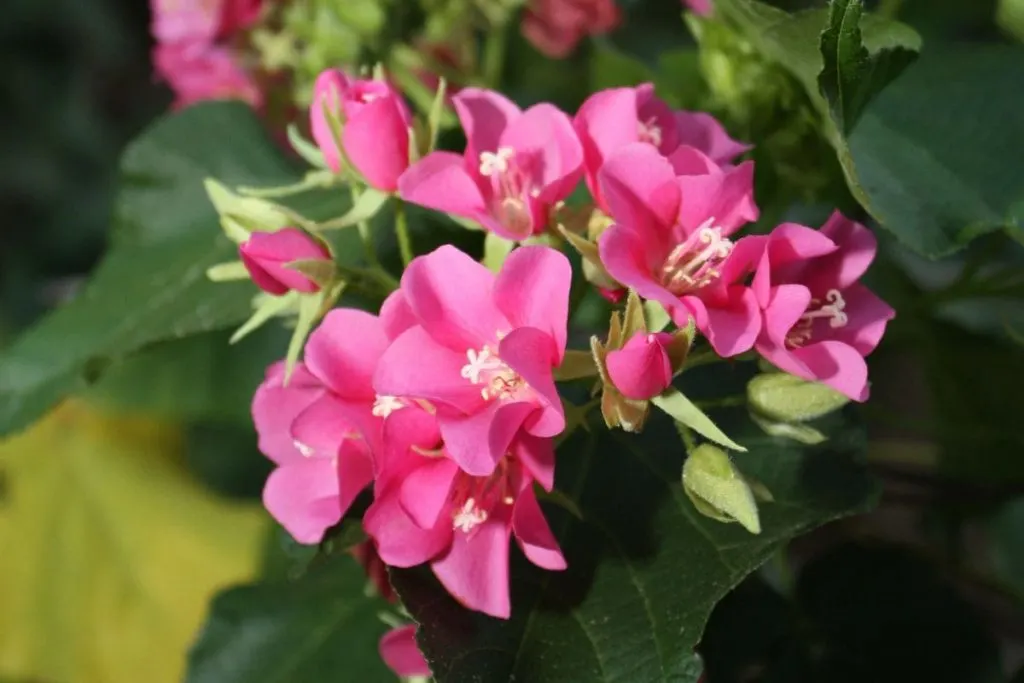
Some people say that the dombeya tree reminds them of the magnolia tree Florida. They look similar and they both attract butterflies. Find its simple care guide below along with its appearance.
- Botanic name: Dombeya
- Family: Malvaceae
- Subfamily: /
- Leaf shape: oval shape
- Flower color: bright pink
- Use: garden shrub
- Toxicity: non-toxic
Light needs
The more sun you give this plant, the fuller this shrub will look. It will grow faster, bloom, and have more flowers and its appearance will be noticeably better. It does not like full shade but tolerates a semi-shade location.
Watering needs and Humidity
It is very easy to overwater this plant because it grows like a bush and sometimes you will use more water than you need without noticing.
They always use the same container because of the amount of water they are watering with. Rainwater suits them best.
Fertilizer and Soil Type
They like loamy soils the most, choose a combination of clay and sand for a winning combination. For fertilizer, look for plants rich in phosphorus, this plant likes it very much.
Temperature and Propagation
The temperature is best when it is between 65 and 75 F. It does not like low temperatures and regions. It is propagated by seeds in early spring.
Wrapping Up
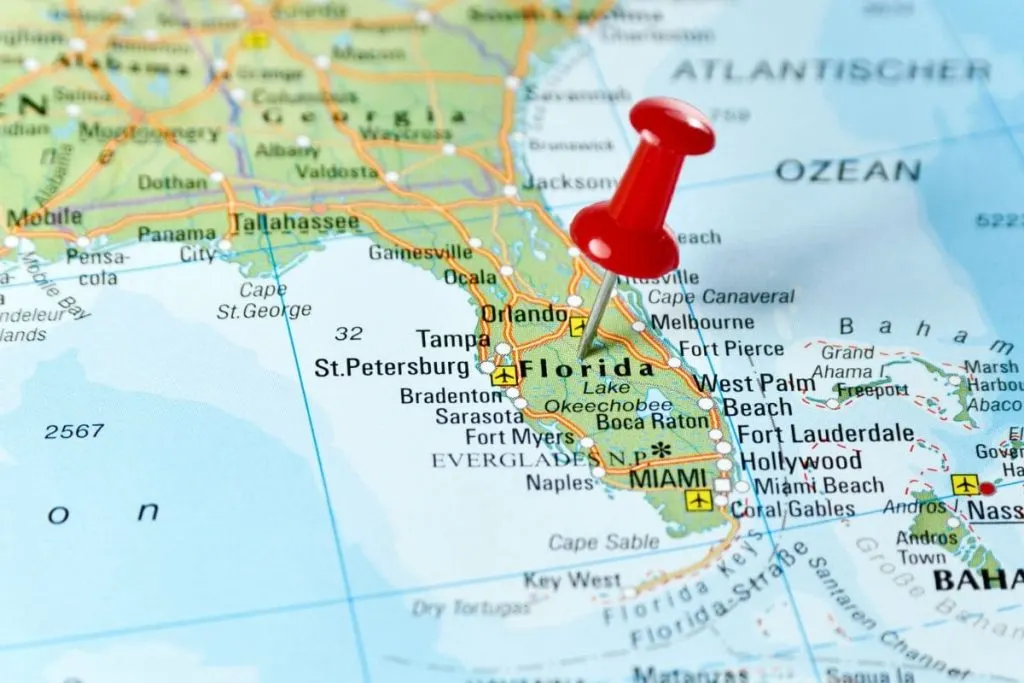
South Florida butterfly plants are amazing plants that will mostly blossom all year round. With red flowers and yellow flowers, your garden will be full of colors the entire year.
You will definitely have the best plants in the neighborhood with these plants. No matter which one you choose, swamp milkweed, passion vine, or a passion flower, you made a good choice.
Common butterflies love the lance-shaped leaves and smaller flowers that these plants exactly have. Drinking nectar from these perfect plants will attract even more butterflies to your garden and it will be full of wildlife.
If you plant ground cover plants, then you will especially see how perfect a garden full of life can be. As you see, they only grow in warmer environments, rarely in partial shade. Many species are drought tolerant and they prefer full sun. Florida is great for those factors.
We hope you enjoyed our article. Happy planting time, see you soon!

